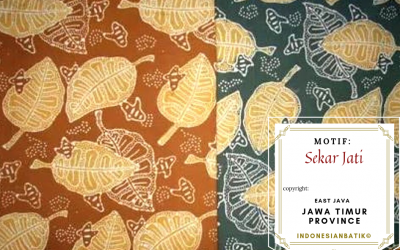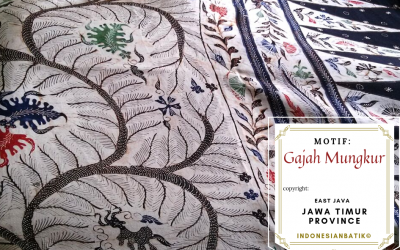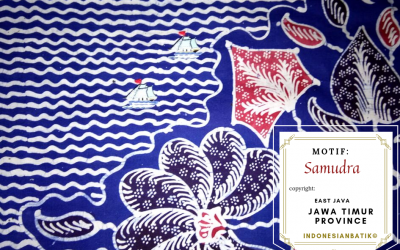Home / Batik Regions – Western Indonesia – Java Island – East Java / Gedhog Kembang Waluh
Gedhog Kembang Waluh
East Java Province – Indonesia
Meanings:
Gedhog Batik motifs are a combination of the Javanese cultural royal motif of the Majapahit kingdom (12th-14th century), Chinese acculturation (12th century), and Islam (1465-1525 AD). The interaction of these three cultures has greatly influenced the lifestyle of the Tuban people until now. Shawls with this motif are usually used for rituals, ceremonies and weddings. This floral motif is symbolically used to protect people from bad luck and to provide healing for the sick.
Note: All contents and batik images are protected by Indonesian cultural property law. This documentation is intended for educational purposes and to facilitate the preservation of Batik UNESCO’s intangible cultural heritage 2009. Any use of published materials is allowed only with reference to this website as the original source of publication.
How to preserve Batik
Philosophical Meanings of Batik
Learn and identify the meaning of the motifs from each region. Are you searching for a meaningful gift for your loved ones? Surprise them with a merry little Batik!
Authentic Batik
Buy the authentic handwritten Batik textiles to add to your prestigious collection. Such support will enhance the well-being of Batik artisans and preserve the living heritage.
Batik Community
If you want to meet the Batik artisans, we encourage you to visit and support Batik workshops in Indonesia. You may discover the local tourism that suits your preference!
UNESCO Intangible Cultural Heritage of Humanity in 2009
Batik Production Process in East Java
Batik production can take 1 month up to 2 years of working time depending on the purposes of the textile creation and the colour complexity. The Batik handwriting textile is generally made with 8 design steps, ranging from wax patterning to colouring process. The artists use Canting, as a tool to put hot melted wax on the cloth.
Batik Regions
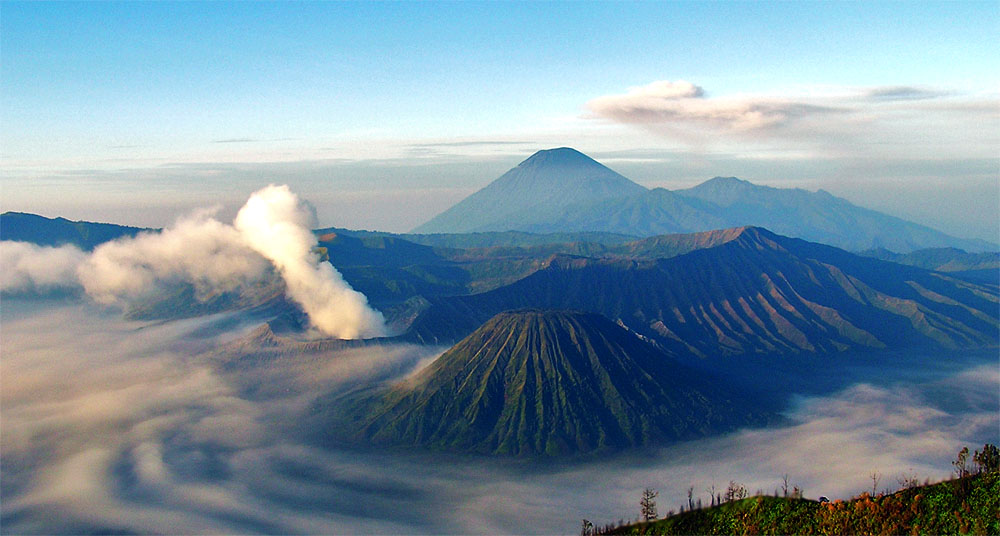
Overview of East Java Province
East Java people have unique and rich culture and wisdom. In addition to the wealth of traditional textile traditions such as batik and weaving, East Java has various festivals and performances unique to each tribe. Examples include the cattle race festival on Madura Island, the Barong Dance Reog Ponorogo show, and the Kasada Tengger Tribe Ceremony on Mount Bromo.
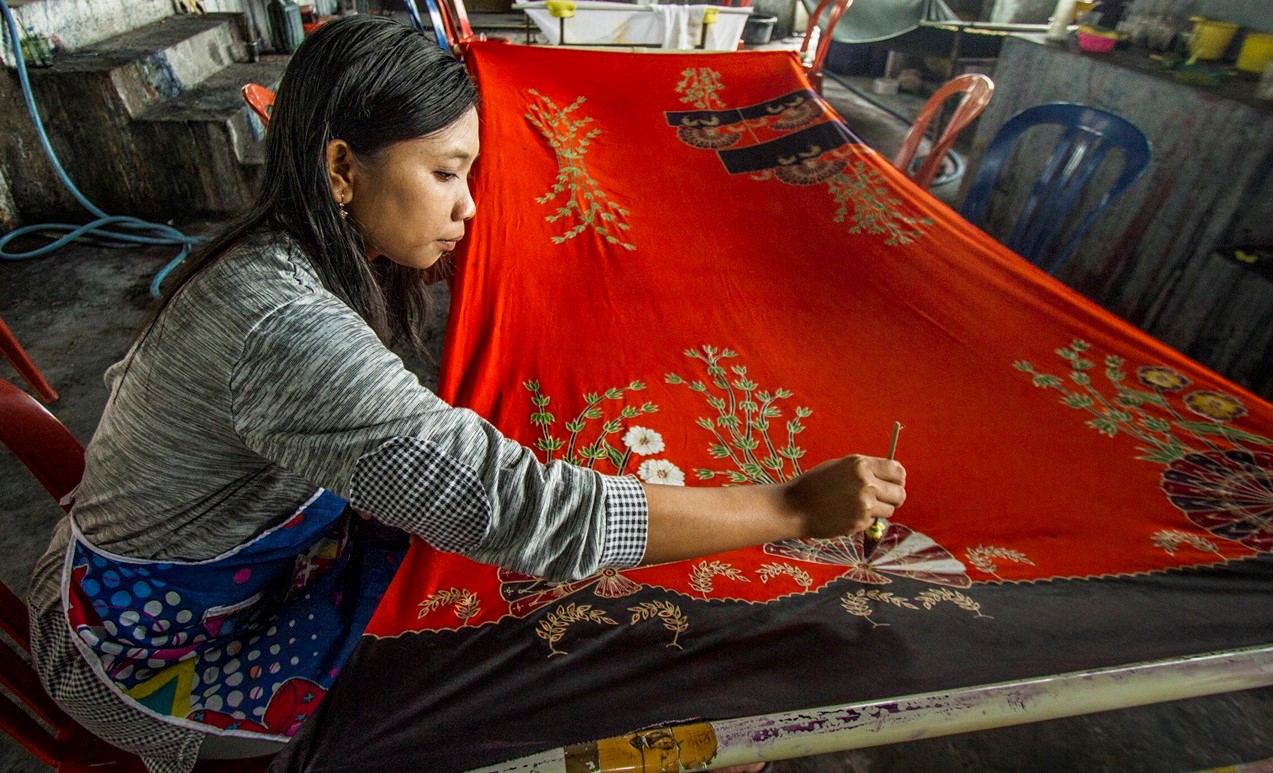
Batik Villages in East Java Province
Batik villages are the region where the Batik producers mostly reside and open their Batik workshops, as well as display their Batik products. You could buy the Batik textiles from the artisans and participate in the making process of Batik on the site.
Other Motifs in East Java
Sekar Jati
Sekar means flower and Jati refers to teak trees that symbolizes a strong mental character that
Gajah Mungkur
Semantically, it means a huge longing emotion trapped in the
Samudra
This art painting means to be strong-willed person to pursue




